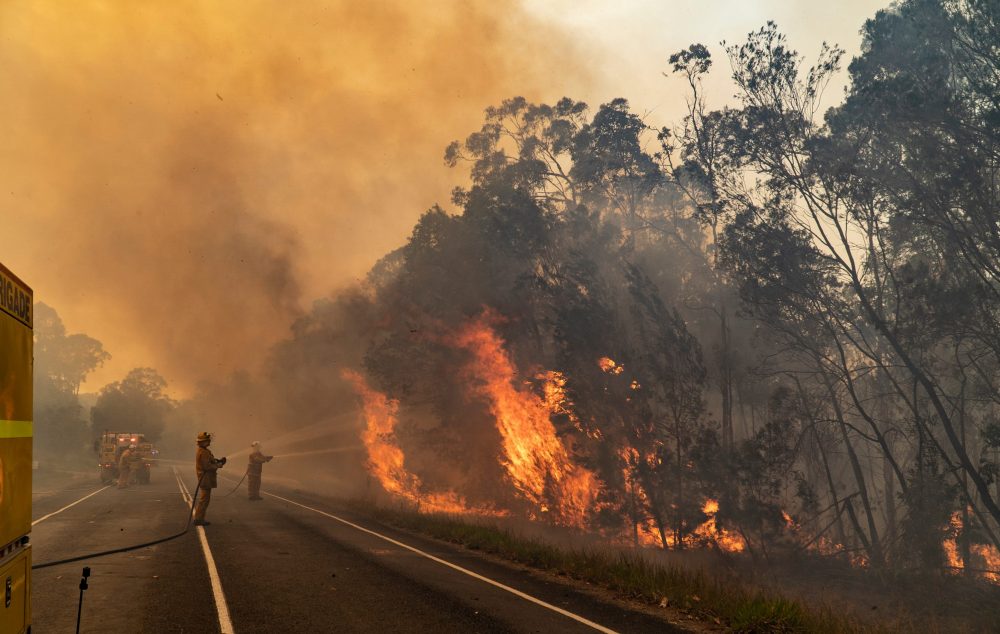Planning for Safety And Security: Creating a Reliable Bushfire Management Plan
Planning for Safety And Security: Creating a Reliable Bushfire Management Plan
Blog Article
The Value of Bushfire Monitoring in Fire Security
In the realm of fire security, the importance of efficient bushfire management can not be understated. As areas around the world come to grips with enhancing circumstances of wildfires, the aggressive technique to avoid and alleviating these natural disasters via critical bushfire administration techniques has become an essential component. Past the immediate danger to human life and building, the interplay between bushfire monitoring and ecological conservation, neighborhood involvement, and environment change postures complicated obstacles that demand comprehensive options.
Importance of Proactive Bushfire Avoidance
Positive bushfire avoidance approaches are important in alleviating the ruining impacts of wildfires on communities and neighborhoods. One crucial facet of proactive bushfire prevention is fuel management.
Educating the public on fire safety and security methods and promoting area understanding about the value of bushfire prevention are essential elements of proactive methods. Ultimately, aggressive bushfire prevention plays a substantial role in guarding neighborhoods and ecosystems from the harmful impacts of wildfires.
Function of Area Interaction in Fire Security
Involving the neighborhood in fire defense efforts is indispensable to enhancing the performance of proactive bushfire avoidance strategies. Neighborhood involvement plays a vital role in cultivating a collective understanding of the risks presented by bushfires and the importance of readiness measures. By involving regional residents, authorities can distribute essential information ablaze safety techniques, evacuation procedures, and early caution systems, equipping people to take aggressive actions to safeguard their residential or commercial properties and lives.
By fostering a society of readiness and collaboration, communities can reinforce their capability to respond effectively to bushfire emergencies, decreasing the effect on buildings and lives. Inevitably, area involvement is a foundation of extensive fire security strategies, emphasizing the significance of collective activity in protecting susceptible areas from the risk of bushfires.
Relevance of Wildlife Conservation in Bushfire Administration
Preservation of wild animals plays a crucial duty in efficient bushfire administration strategies, ensuring the protection of diverse communities and biodiversity in fire-prone areas. Wildlife conservation is vital as it adds to the total durability of ecosystems, helping in their capacity to recover and stand up to from the impact of bushfires. By saving environments and securing numerous species, the natural equilibrium within these ecosystems is maintained, which is crucial for their long-term health and wellness and sustainability.
In addition, wildlife preservation likewise aids in reducing the risk and strength of bushfires. Healthy ecosystems with unspoiled wildlife populations can act as all-natural firebreaks, decreasing the spread of fires and limiting their harmful capacity (BAL Assessment). Certain animal types, like tunneling animals or birds that spread out seeds, play special duties in preventing fires or aiding in the post-fire regeneration of habitats
Incorporating wildlife conservation right into bushfire monitoring strategies is not just essential for safeguarding biodiversity but also for promoting the total wellness and strength of ecological communities despite raising fire hazards.
Advantages of Strategic Gas Reduction Programs
Strategically implementing gas reduction programs is essential in mitigating the threat and effect of bushfires in fire-prone regions. These programs entail controlled burning, mechanical clearing, and various other techniques to reduce the quantity of flammable plant life offered to fuel wildfires. By purposefully decreasing gas tons in key locations, such as near property communities or essential facilities, the intensity and spread of bushfires can be dramatically reduced.
Among the main advantages of fuel decrease programs is the enhancement of total fire durability in an ecosystem. By developing tactical gas breaks and reducing the connection of plant life, these programs assist to disrupt the path of a bushfire, making it much easier for firefighters to extinguish the blaze and consist of. In addition, fuel decrease programs can secure biodiversity by avoiding exceedingly intense fires that can ravage environments and intimidate wildlife populations.
In addition, these programs can also protect human lives and residential or commercial Bushfire Risk property by reducing the threat of catastrophic fires that position a considerable threat to areas. Ultimately, tactical fuel decrease programs play a crucial role in positive bushfire administration and cultivating a more secure setting for both individuals and nature.
Impact of Climate Modification on Bushfire Danger

Greater temperature levels lead to drier plant life, making it more prone to ignition. Reduced rainfall in specific areas prolongs drought problems, further enhancing the flammability of the landscape. In addition, the transforming climate has changed wind patterns and weather, resulting in even more irregular fire behavior and fast fire spread.
As the environment proceeds to transform, the frequency and intensity of bushfires are anticipated to climb, necessitating a positive and flexible approach to bushfire monitoring. Strategies should progress to make up the altering threat landscape, integrating climate forecasts and considering long-term resilience in fire management planning. Addressing the impact of climate modification on bushfire danger is vital in creating reliable approaches to shield lives, residential or commercial property, and the atmosphere.
Conclusion
To conclude, proactive bushfire prevention, area involvement, wild animals preservation, tactical fuel decrease programs, and factor to consider of climate change are essential parts in reliable fire security. By executing these strategies, we can much better take care of bushfire dangers and protect both human lives and the setting. Bushfire Risk. It is imperative that stakeholders collaborate to focus on these procedures to reduce the terrible impact of bushfires on areas and ecological communities

As the environment proceeds to alter, the frequency and strength of bushfires are anticipated to rise, necessitating a proactive and flexible approach to bushfire monitoring.In verdict, positive bushfire prevention, area interaction, wildlife preservation, critical fuel decrease programs, and factor to consider of climate change are important components in effective fire defense.
Report this page